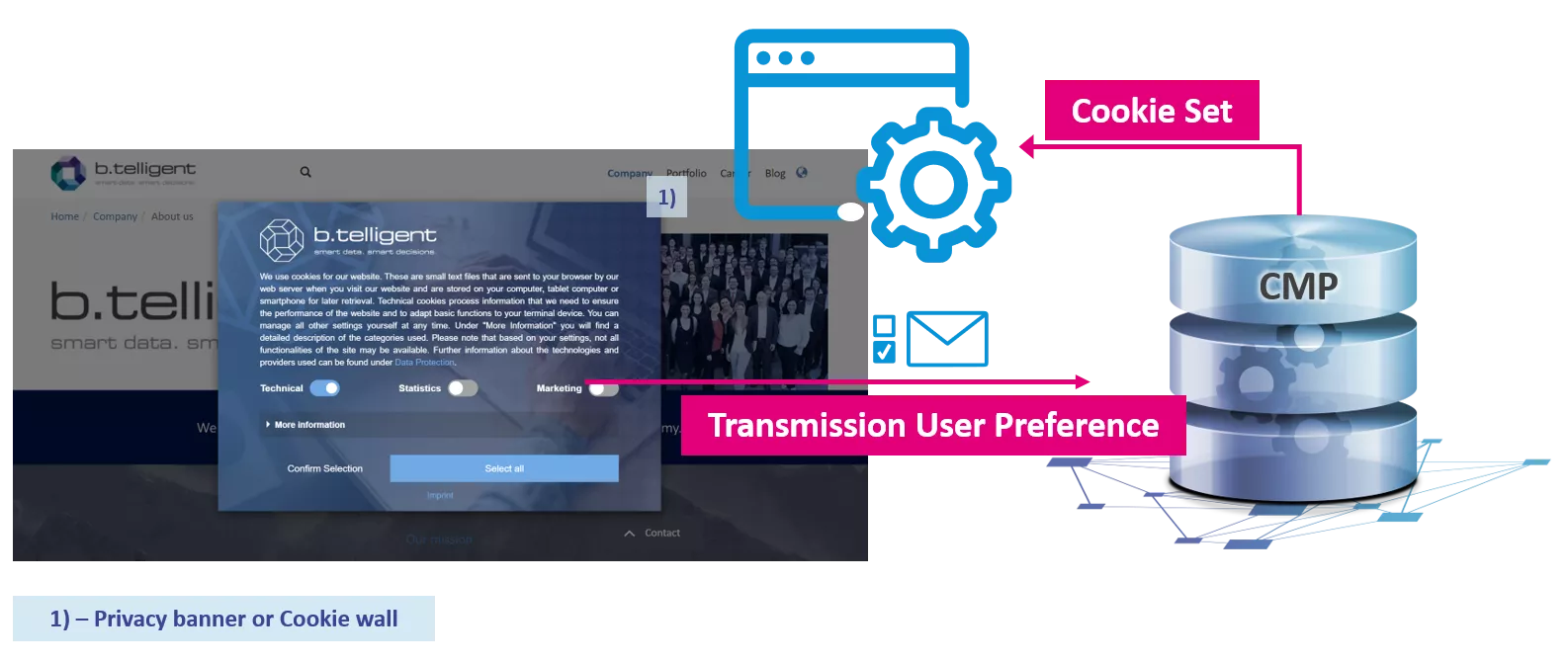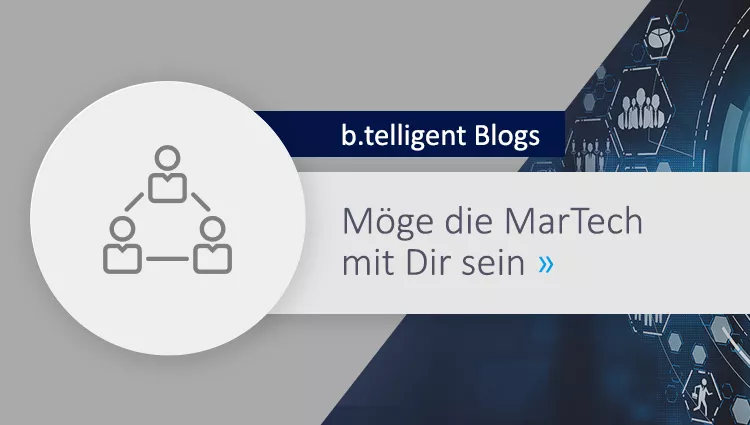It's a familiar scenario: when you visit a website, you have to click through a number of popups asking for consent to use your data. Should you accept them all? Or just essential cookies? Or just marketing? This procedure, which can be very irritating for users, has become a highly complex issue for marketers. A variety of technologies and functions are used to obtain and manage consent, ensure it is kept up to date, documented transparently, is legally compliant, and in case of doubt, can quickly be made available throughout the company. And it all has to be done as simply and efficiently as possible. Can this really be achieved? Indeed it can! The trick, as is often the case, is to use the right software. In this case, the right software is a Content Management Platform (CPM).
Marketing resource management, marketing cloud, consent management platform – would you like to learn more about how to implement these marketing technologies? If so, you're invited to join us on a journey into the MarTech galaxy: "Next Generation CRM - May the MarTech be with you".
Online or offline: consent is needed everywhere
It has long been known that the online sector's ability to support interaction and analysis has made it increasingly important for marketing. How good was our last advertising campaign? Are there any anomalies in the way our webshop operates? And how can I retain customers over the long term? In order to identify opportunities, measure reach and continually improve, we need data on our customers obtained from websites or apps – ideally in real time and linked to other CRM data. But it doesn't end there. To avoid digital chaos and serious data protection violations, there's one thing I need more than anything else: the individual consent of the users. Incidentally, it's worth noting that consent is also required for processing data offline – for example, when sharing data with third parties.
Everything is regulated by applicable laws and regulations, which can vary a great deal depending on the products, services and industry involved. As soon as I collect data from users within the EU, the General Data Protection Regulation (DGPR) applies. The Telecommunications Act (TKG) and the Telemedia Act (TMG) also provide clear guidelines for German companies.

So what does this mean for us as marketers?
- It means that, when we want to process data in a way that goes beyond what is necessary or normally permitted, we need to legitimize the reason for requesting the user's consent.
- Consent must then be obtained efficiently and appropriately via the right channels.
- Based on this "opt-in", I can then use technical means to collect the relevant data I require. In return, of course, I must stop processing this data if the data subject withdraws their consent, or decides to opt out. Delays should be kept to a minimum to ensure that all data remains up to date.
Go to privacy settings
DSGVO & Co.: Gefangen im Kundendaten-Dschungel?
Was bedeutet DSGVO eigentlich für Unternehmen und deren Kundendaten? Und wie behält man bei all den Daten überhaupt noch den Überblick? Die Antwort darauf: Consent Management.
What is a consent management platform?
From a technical point of view, a consent management platform is a piece of software that helps us to manage how cookies are used, taking account of the consents given. This means that whether or not cookies are activated depends on the consent that has been given. Managing and documenting consent, with dates and possible restrictions, is also the task of the CMP. Control is implemented with the aid of a cookie wall or privacy banners. Behind the scenes, the cookies being used are assigned to the appropriate consent declarations and activated depending on the consent. To put it another way: if I have only agreed to the use of technical cookies, only these will be set. If I have given all available consents, all cookies can be used also track my visit to the website.
This requires the CMP to interact with the tag management system responsible for administering the tags or cookies. Depending on the provider, this can also be done by the same tool. Another implementation option is an interface or connector linking the two solutions. Here, the CMP links the consent given by the cookies that will be activated and stores the relevant consent information. It is also important to assign the consent to the purpose of the data collection (as stated in the consent declaration) because, should use of the data go beyond the actual purpose for which it has been collected, it is usually impossible, or at least not easy, to prove that the use is compatible with data protection.
Note: A cookie wall is similar to a pop-up banner, but it explicitly asks the user to accept cookies in order to continue using the website.
Hierfür ist die Interaktion der CMP mit dem jeweiligen Tag-Management-System erforderlich, das die Tags oder Cookies technisch verwaltet. Das kann je nach Anbieter auch innerhalb des gleichen Tools stattfinden. Eine andere Möglichkeit der Implementierung ist eine Schnittstelle oder ein Connector, der die beiden Lösungen miteinander verbindet. Die CMP verbindet also den abgegebenen Consent (Einwilligung) mit den auszuspielenden Cookies und speichert die relevanten Informationen zum Consent. Wichtig dabei ist ebenfalls die Zuordnung der Einwilligung zum beschriebenen Zweck der Datenerhebung im Einwilligungstext, denn eine Nutzung der Daten ist meist nicht oder nur schwer mit dem Datenschutz in Einklang zu bringen, wenn diese über den eigentlichen Zweck der Datenerhebung hinausgeht.

Would you like to learn more about the use of cookies and consent and find out which CMP is right for you? Then sign up for our newsletter to no miss the second part of this blog post!












